SpaceX launches 53 Starlink internet satellites and lands rocket in foggy flight
It's SpaceX's second rocket launch in a busy week.
CAPE CANAVERAL, Fla. — SpaceX just launched its second rocket this week, this time carrying a stack of Starlink satellites into orbit in a foggy flight, before sticking a booster landing at sea.
The previously-flown Falcon 9 rocket blasted off from Space Launch Complex 40 here at Cape Canaveral Space Force Station at 7:19 a.m. EST (1219 GMT), marking the company's 25th launch of the year. It also marked this particular booster's ninth flight.
"Falcon has landed," SpaceX Dragon propulsion engineer Youmei Zhou said during live commentary. "This marks the 87th overall successful recovery of a Falcon 9 first stage."
The launch attempt comes just 24 hours after SpaceX was forced to delay due to stormy conditions here at the Cape. Saturday morning started out with a layer of dense fog hanging over the launch site, which slowly dissipated once the sun came up. Sitting on the launchpad, the rocket was barely visible, but once it leaped off the pad and into the sky, the rocket was crystal clear against blue skies.
Related: SpaceX's Starlink satellite megaconstellation launches in photos
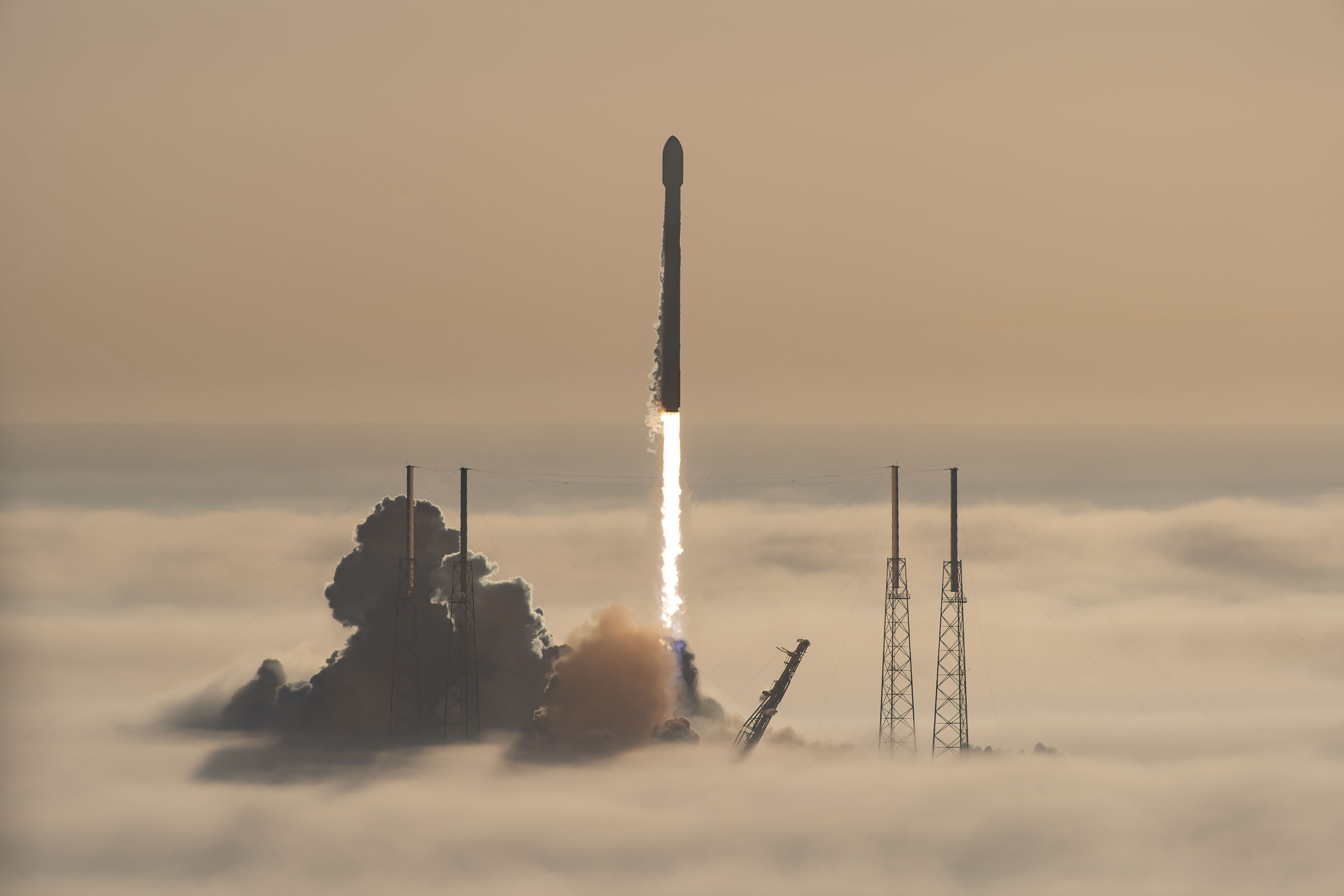

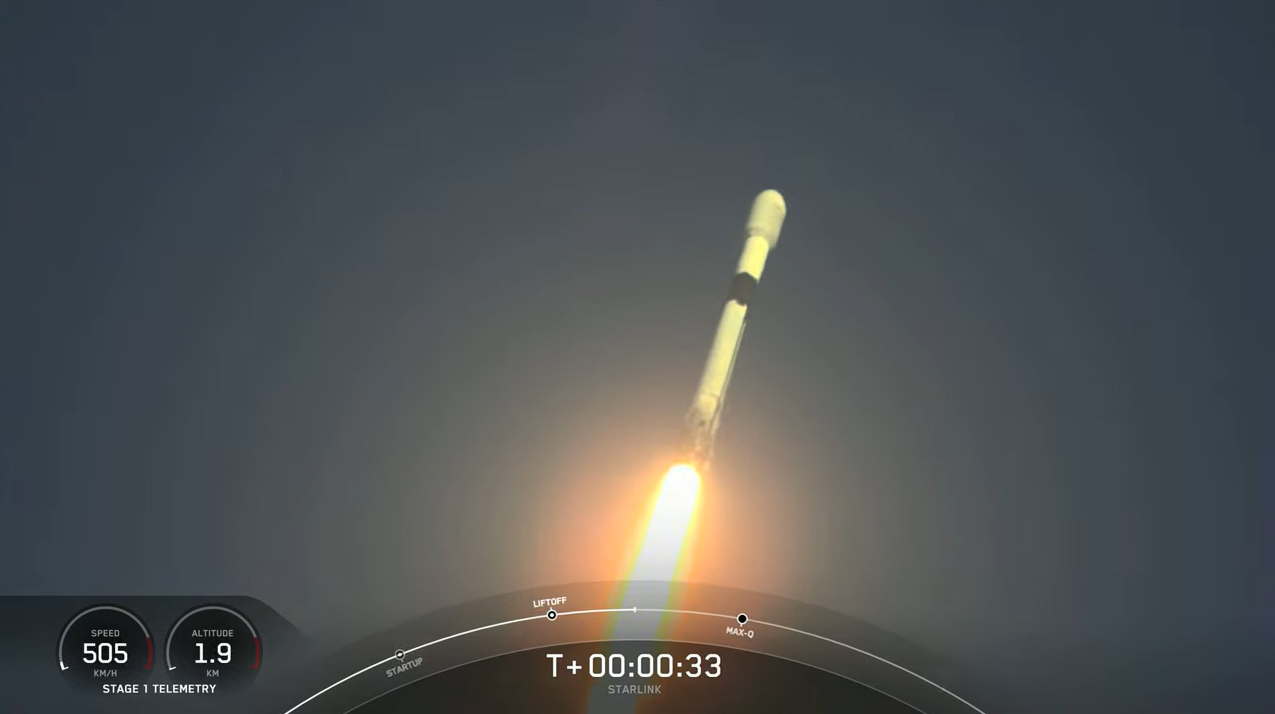
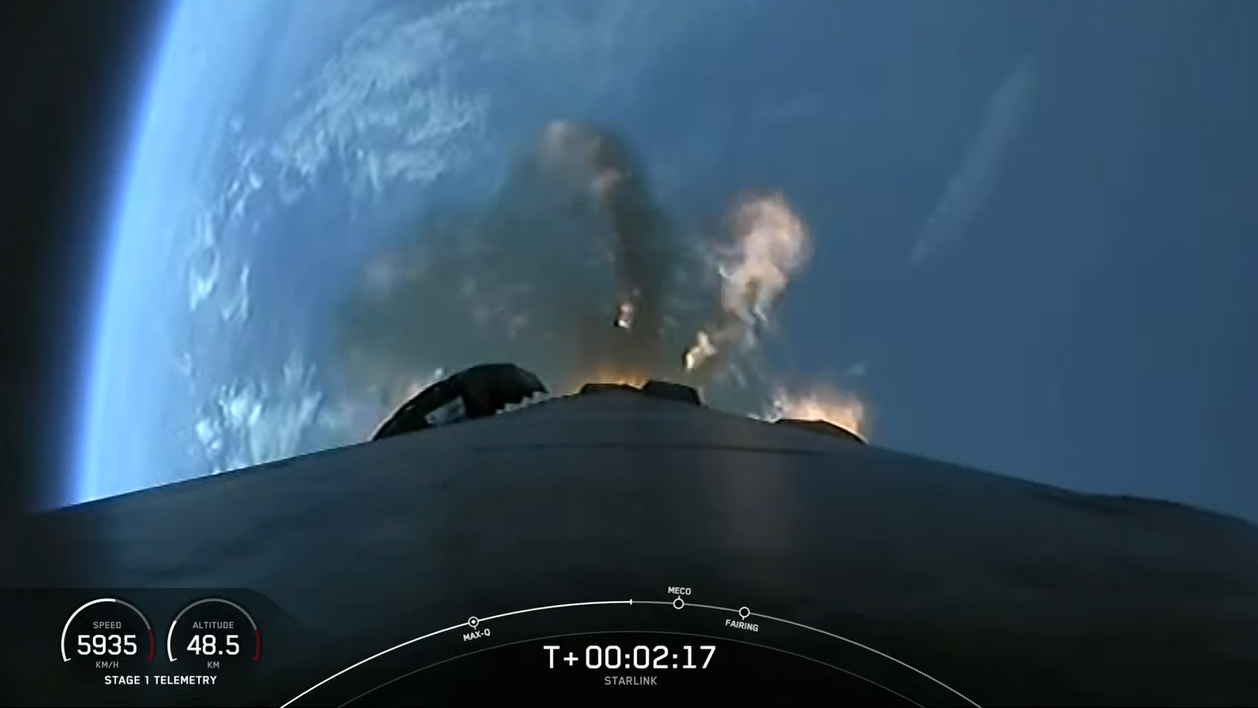
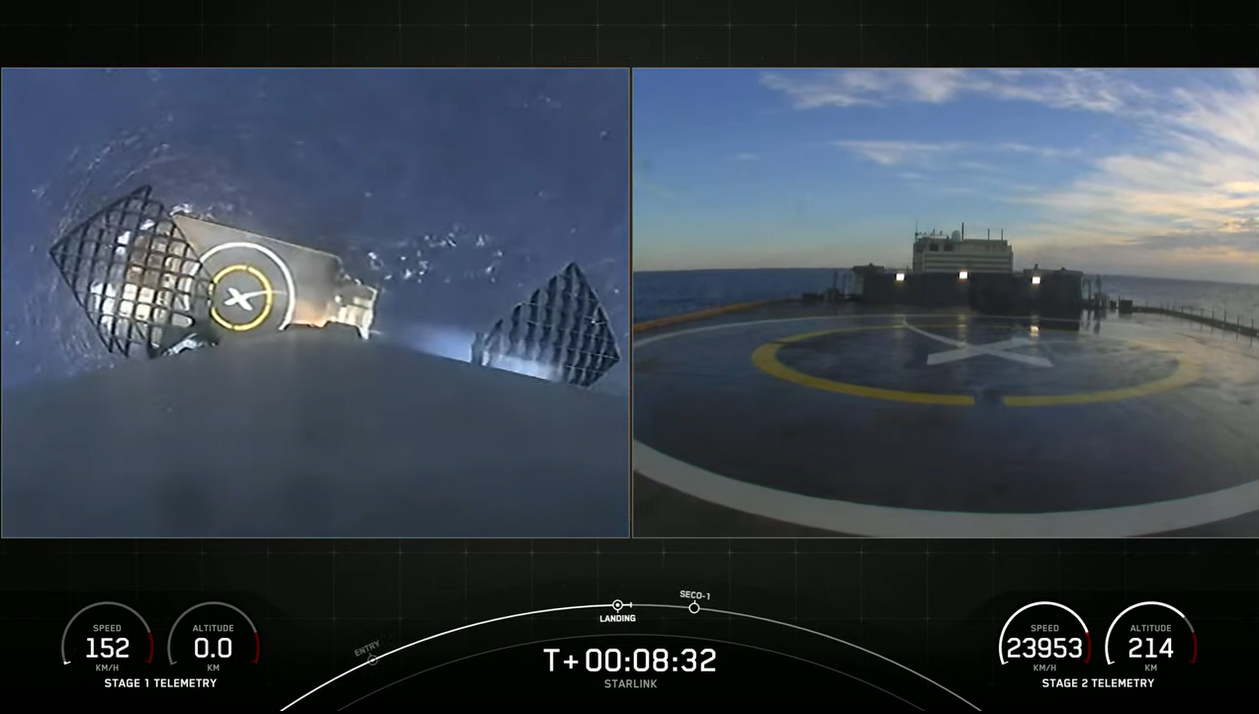
The successful liftoff marked the first SpaceX Starlink launch from Florida on one of its 229-foot-tall (70 meters) workhorse Falcon 9 rockets in six months. (SpaceX launched a Starlink mission from its California-based launch pad in September.)
The company attributes the brief lull in Starlink launches to the roll out of new satellites, which are now equipped with laser-based systems to communicate with each other in orbit, and less with the ground.
Get the Space.com Newsletter
Breaking space news, the latest updates on rocket launches, skywatching events and more!
About nine minutes after liftoff, the rocket's first stage returned to Earth, touching down on SpaceX's drone ship Just Read the Instructions, for a successful landing. The ship, which was previously scheduled to support the launch of SpaceX's Crew-3 astronaut mission for NASA, which lifted off on Wednesday (Nov. 10), swapped duties with its counterpart A Shortfall of Gravitas, which is SpaceX's newest ship.
SpaceX officials said that due to the delays with the most recent crew launch, Just Read the Instructions was forced to stay out at sea, braving waves ranging from 20 feet to 25 feet high. Although the drone ships are designed to withstand those wave heights, the teams opted to switch out the ships (and the crew) so teams would be fresh for both launches.
A massive constellation in orbit

SpaceX's Starlink megaconstellation is designed to provide high-speed internet coverage to users around the world below, particularly those in remote and rural areas that do not have access to traditional internet connections.
To date, SpaceX has delivered more than 100,000 Starlink internet terminals and the service has been approved to operate in at least 14 different countries, with applications pending in several others. In September, the company launched its first full set of satellites into a polar orbit, which will help the company provide access to people in higher-latitudes.
With Saturday's successful launch, SpaceX has lofted 1,844 Starlink satellites into orbit (including the initial test versions), which goes well beyond the company's initial quota of 1,440 satellites. However, the company has official approval for thousands more.
Today's flight is the second batch of the company's recently upgraded Starlink internet satellites, which are now equipped with intra-satellite laser communications.
Starlink review (hands-on): How good is Elon Musk's satellite internet service?
A reused rocket
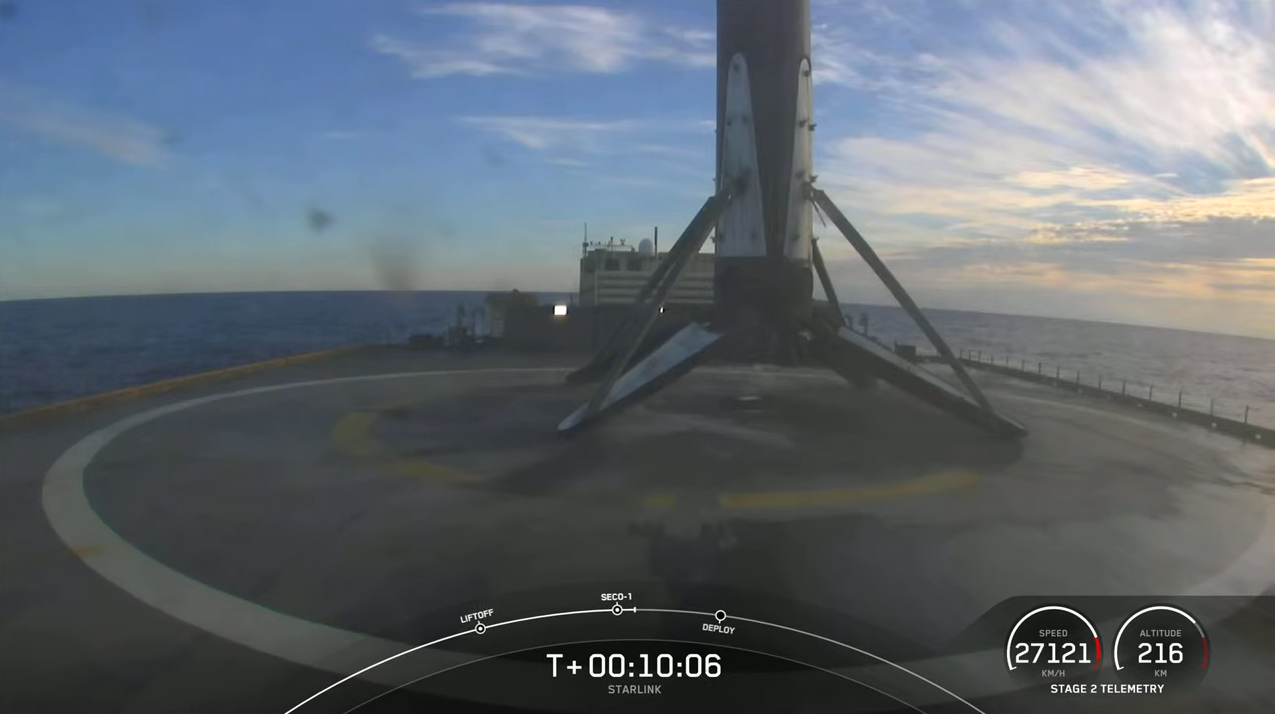
The Falcon 9 rocket on today's launch, called B1058 is a flight-proven booster that has flown eight times before. It debuted in May 2020, carrying NASA astronauts Bob Behnken and Doug Hurley to the International Space Station as part of SpaceX’s Demo-2 mission for NASA.
It also launched a communications satellite for South Korea’s military, more than 100 small satellites on the Transporter-1 mission, the CRS-21 cargo Dragon spacecraft and four other Starlink satellite payloads.
Along with the rocket's first stage, SpaceX also recycled the clamshell-like protective hardware that encases the payload. Called a payload fairing (or nose cone), the two pieces account for 1/10th of the rocket's cost SpaceX officials have said. Each piece fetches $3 million, so reusing them helps keep down costs.
Equipped with navigation software and parachutes, the fairings will gently splash down in the Atlantic Ocean where they will be retrieved by one of SpaceX's recovery vessels to be refurbished for a future flight.
This is the 128th overall flight of a Falcon 9 rocket booster, and the 23rd Falcon 9 flight so far this year for SpaceX. It's also the second rocket to launch in an incredibly busy week for SpaceX, which saw the return of one crew of astronauts from the International Space Station, as well as the launch of another.
Launch double header
Saturday's launch success put the cherry on top of a busy week for the private spaceflight company.
On Monday (Nov. 8), the company retrieved the Crew Dragon capsule Endeavour from the Gulf of Mexico. It's crew: four astronauts. The return marked the end of SpaceX's Crew-2 mission for NASA, the company's second long-duration flight. Shane Kimbrough and Megan McArthur (NASA) as well as Thomas Pesquet (European Space Agency) and Akihiko Hoshide (Japan Aerospace Exploration Agency) returned to Earth safely after a six-month stay on the space station.
Just two days later, SpaceX launched its next crew of astronauts: the Crew-3 mission's Raja Chari, Tom Marshburn and Kayla Barron (all of NASA) along with the European Space Agency astronaut Matthias Maurer of NASA. Typically NASA and SpaceX prefer to launch a new crew before bringing the previous crew home, but a string of weather delays kept Crew-3 on the ground longer than expected. Crew-3's Dragon, called Endurance, arrived at the space station on Thusday (Nov. 11).
Their launch marked a significant milestone for SpaceX: launching 18 people into space in 18 months. Since SpaceX's first crewed launch for NASA in May 2020, the company has launched three more crews to the space station and one private flight called Inspiration4.
The four private astronauts of Inspiration4 launched in September, but did not go to the space station. Instead, they orbited the Earth for three days as part of an effort to raise money for St. Jude Children's Research Hospital.
Correction: A previous version of this story stated today's launch was SpaceX's 23rd flight of the year based on a spokesperson. It was the 25th launch of a SpaceX Falcon 9 of 2021.
Follow Amy Thompson on Twitter @astrogingersnap. Follow us on Twitter @Spacedotcom or Facebook.
Join our Space Forums to keep talking space on the latest missions, night sky and more! And if you have a news tip, correction or comment, let us know at: community@space.com.

Amy Thompson is a Florida-based space and science journalist, who joined Space.com as a contributing writer in 2015. She's passionate about all things space and is a huge science and science-fiction geek. Star Wars is her favorite fandom, with that sassy little droid, R2D2 being her favorite. She studied science at the University of Florida, earning a degree in microbiology. Her work has also been published in Newsweek, VICE, Smithsonian, and many more. Now she chases rockets, writing about launches, commercial space, space station science, and everything in between.









